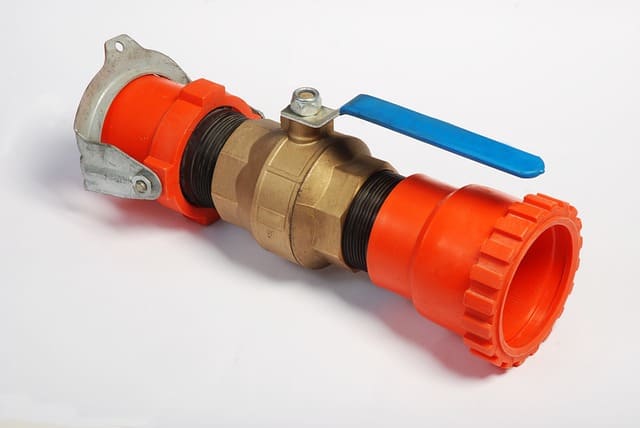In industrial processes, the control and management of steam and hot water play vital roles in ensuring efficient operations and safety. Valves are crucial components that regulate these fluids’ flow, pressure, and temperature. Choosing the right valve type is essential to achieve optimal performance and prevent potential hazards. This article explores the design features of valves for steam and hot water applications, delving into the various types commonly used in industries today.
Design Features for Valves for Steam and Hot Water
When dealing with steam and hot water, valves must be designed to withstand high temperatures, pressures, and corrosive properties of these fluids. Several key design features ensure their suitability for such applications:
- Material Selection: Valves used for steam and hot water must be constructed from materials capable of withstanding extreme temperatures and resisting corrosion. Stainless steel, bronze, and cast iron are commonly used for valves due to their durability and high-temperature tolerance.
- Pressure and Temperature Ratings: Valves are rated based on maximum allowable pressure and temperature limits. Valves should be selected with appropriate pressure and temperature ratings for steam and hot water applications to ensure safe and reliable operation under varying conditions.
- Sealing Mechanism: Effective sealing is critical to prevent steam or hot water leaks that can lead to energy losses and safety hazards. Depending on the specific application requirements, valves may use various sealing mechanisms, such as soft seats, metal seats, or resilient O-rings.
- Flow Control: Valves should provide precise flow control to adjust the steam or hot water volume passing through the system. This feature ensures efficient operation and avoids unnecessary energy consumption.
- Thermal Expansion Considerations: When handling hot fluids, valves should account for thermal expansion to prevent binding or leakage during temperature fluctuations. Proper design and materials can accommodate the expansion and contraction without compromising valve performance.
- Steam Traps: Steam traps are vital in removing condensate and non-condensable gases in steam systems. Valves with integral steam traps designed for steam trap installation enhance the efficiency of steam systems by removing unwanted liquids and air.
Types of Valves Used for Steam and Hot Water
- Solenoid Valve: Solenoid valves are electromagnetic devices widely used in steam and hot water applications for their rapid response and precise control capabilities. When energized, these valves operate using an electric coil that creates a magnetic field, allowing the valve to open or close the flow path. Solenoid valves are popular for on/off control due to their quick response times, making them suitable for applications where immediate shut-off is necessary to prevent water or steam leaks. Their compact design and ability to integrate into automated systems further enhance their efficiency and reliability in managing the flow of hot water and steam.
- Globe Valves: Globe valves are versatile and commonly used in steam and hot water applications. They offer excellent throttling control, making them suitable for regulating flow. The design includes a movable plug or disc that can be raised or lowered to control fluid flow. Globe valves are well-suited for applications requiring fine adjustments in flow rates or partial opening.
- Ball Valves: Ball valves are known for their quick and reliable on/off operation. They use a spherical disc (the ball) with a bore through it, allowing or blocking flow by rotating the ball 90 degrees. While primarily used for on/off control, some ball valves are also designed for throttling applications. Stainless steel or brass ball valves are often used in steam and hot water systems due to their corrosion resistance.
- Gate Valves: Gate valves are well-suited for full-flow or shut-off applications. They use a flat gate or wedge that moves perpendicular to the flow direction to allow or block fluid passage. While they provide minimal flow control, gate valves have low-pressure drops and are suitable for tight shut-off applications.
- Butterfly Valves: Butterfly valves are lightweight and cost-effective choices for large-diameter applications. They feature a rotating disc (the butterfly) placed in the center of the pipe, controlling flow by turning the disc parallel or perpendicular to the flow direction. While they are not ideal for fine flow control, butterfly valves are widely used in low-pressure steam and hot water systems.
- Check Valves: Check valves, or non-return valves, allow fluid flow in one direction while preventing backflow. They are essential in steam and hot water systems to prevent damage from reverse flow, water hammer, or thermal expansion. Check valves can be of various types, including swing, lift, and ball check valves, each offering specific advantages based on the application.
- Pressure Reducing Valves: As the name suggests, pressure-reducing valves are used to regulate and reduce the pressure of steam or hot water before it enters downstream equipment or processes. These valves maintain a constant and safe pressure level, protecting the system from overpressure and ensuring efficient operation.
- Safety Relief Valves: Safety relief valves are vital components in steam systems to safeguard against pressure buildup that could lead to catastrophic failures. These valves automatically open when the pressure exceeds a predetermined limit, releasing excess steam or hot water to maintain system integrity and protect equipment and personnel.
Conclusion
Selecting the appropriate valve for steam and hot water applications is essential to achieve safe and efficient operations in industrial processes. Engineers can choose the most suitable valve type for specific system requirements by considering design features such as material selection, pressure, temperature ratings, sealing mechanisms, and flow control capabilities. Globe valves, ball valves, gate valves, butterfly valves, check valves, pressure-reducing valves, and safety relief valves are among the key types used in steam and hot water systems, each offering unique advantages to ensure the smooth and reliable operation of industrial processes.

Recent Comments